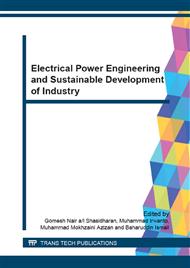p.440
p.445
p.450
p.457
p.462
p.467
p.473
p.478
p.483
Solving Emission Dispatch Problem with Multiple Fuel Option by Using Differential Evolution Immunized Ant Colony Optimization Technique
Abstract:
Emission dispatching is conducted to calculate the lowest amount of emission while generating satisfying output to the load demand. The utilities are restricted by emission regulation that limits the emission level to a certain amount. This paper proposes emission dispatch with multiple fuel option (EDMFO) to determine the optimal emission level. The EDMFO allows the operators to select different type of fuel according to the generation level and requirement. The emission dispatch problem is optimized by using Differential Evolution Immunized Ant Colony Optimization (DEIANT) technique. Validation process is conducted by comparing DEIANT with several optimization approaches including ACO and EP. The comparison took places in IEE 57-Bus RTS. Results indicate that DEIANT is superior in terms of calculating the lowest emission level, lower operating cost and the best selection of fuel according to the generation requirement.
Info:
Periodical:
Pages:
462-466
Citation:
Online since:
September 2015
Price:
Сopyright:
© 2015 Trans Tech Publications Ltd. All Rights Reserved
Share:
Citation:


